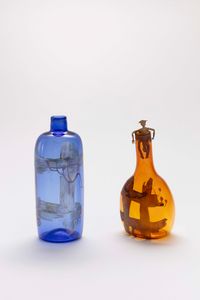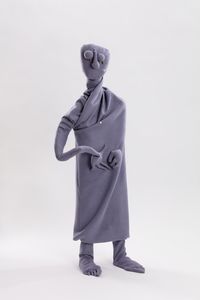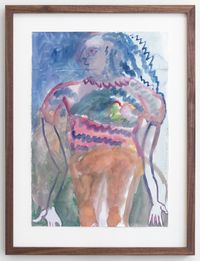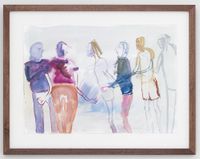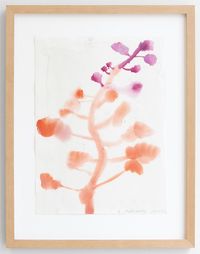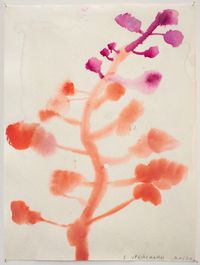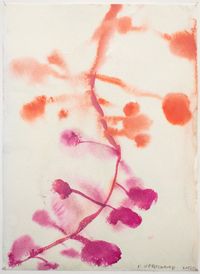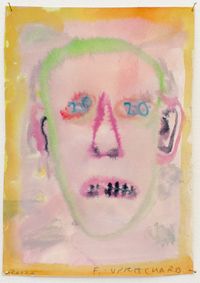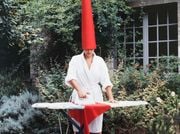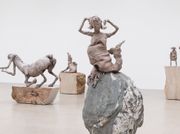Francis Upritchard's work draws on figurative sculpture, blending references from literature to ancient sculptures, and burial grounds to science fiction. Her installations showcase a wide variety of materials; her distinctive figurative sculptures are made using polymer plastic, amorphous mythological figures in balata - a natural rubber - bronze dinosaurs, glass vessels and ceramic urns. 'Upritchard questions how we construct a vision for the future through our fractured, partial and often conflicted understanding of the past.
Read MoreShe creates a place where histories and archives can be viewed anew through playfully exploring aspects of partiality, misreading and uncanny coincidences. Upritchard's mini worlds are anti-imperial and non-hierarchical - there is no dominant culture.' Heather Galbraith.
Francis Upritchard was born in 1976 in New Plymouth, New Zealand. She lives and works in London and New Zealand.
Francis Upritchard is one of nine artists selected by Art Gallery of New South Wales in Sydney to undertake a large-scale commission outside the new Sydney Modern, to be realised in late 2022. Recent solo exhibitions include A Loose Hold, Kunsthaus Pasquart, Biel/Bienne, Switzerland (2022), Surf'n'Turf, Kate MacGarry, London (2022), Paper, Creature, Stone, Christchurch Art Gallery, New Zealand (2022), Big Fish Eat Little Fish, Museum Dhondt-Dhaenens, Belgium (2020).
Previous solo exhibitions include Wetwang Slack at the Barbican Centre, London (2018-19), Centaurs and Sea Creatures, Ivan Anthony, Auckland, New Zealand (2018), Jealous Saboteurs, Dunedin Public Art Gallery and Christchurch Art Gallery, Christchurch, New Zealand (2017), Monash University Museum of Art (MUMA), Melbourne, Australia (2016); and at the City Gallery Wellington, Wellington, New Zealand (2016); The Hammer Museum, Los Angeles (2014); Whitechapel Gallery, London (2014); Potato Poem, the Marugame Genichiro-Inokuma Museum of Contemporary Art, Japan (2013); Mandrake, The Douglas Hyde Gallery, Dublin, Ireland (2013); A Hand of Cards, Nottingham Contemporary, UK (2012); Cincinnati Contemporary Art Center, (2012). Francis Upritchard represented New Zealand in 53rd Venice Biennale (2009).
In 1998, a year after Francis Upritchard (b. 1976) graduated from the Canterbury School of Fine Arts in Christchurch, New Zealand, she re-located to London. Within two or three years of arriving she had become known for unusual sculpture made from modelling putty or fur, ambiguous works that exploited the conventions of museological display and the visual characteristics of tribal artifacts or taxidermied animals. Mixing satire, humour and poignancy, often with the use of scraps of oddly shaped materials that she found, Upritchard ascended quickly, reaching the Becks Futures shortlist in 2003 and winning the Walters Prize in New Zealand three years later.
When Upritchard exhibited in the Venice Biennale in 2009 (representing New Zealand jointly with Judy Millar) her new work attained a more pronounced lyricism. Presented on beautiful inlaid tables - not plinths - there was a consistent emphasis in expressive body gesture, combined with greater theatricality and more vibrant colour.
Upritchard has works in many New Zealand, British and international collections.
Text courtesy Kate MacGarry.
